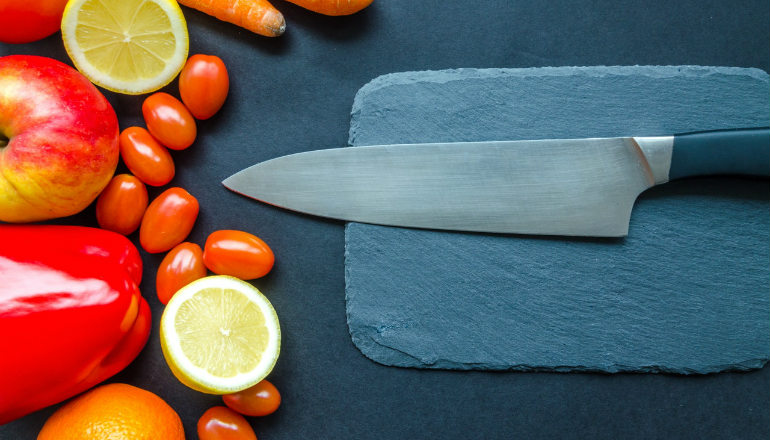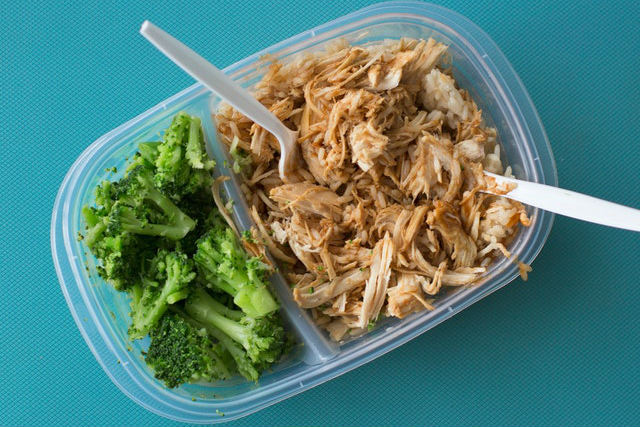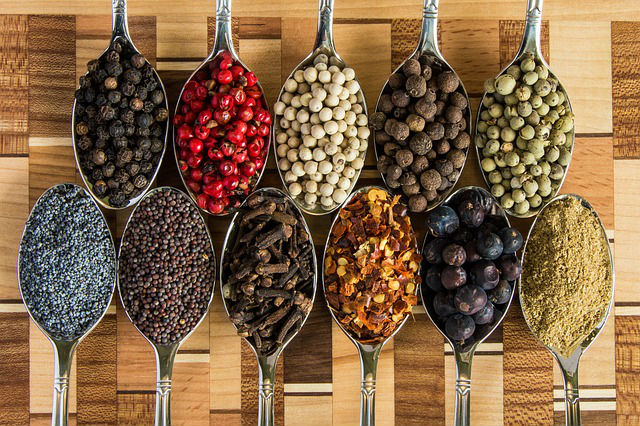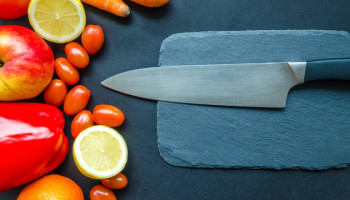 Reading Time: 5 minutes
Reading Time: 5 minutesHave you ever tried and failed at meal prep?
It’s probably because of one or all of these four reasons:
- You made a hot mess of the kitchen (and maybe the food, too).
- You spent way longer than you anticipated.
- You made a big batch of the same thing and couldn’t stand looking at it by the end of the week.
- You made more meals than you could eat and watched good food go to waste.
These are problems all first-time meal-preppers face. The people who solve these problems go on to make meal prep a healthy part of their weekly routines. The ones who don’t will fall back into their patchwork of take-out, delivery, frozen foods, and meal replacement bars.
I want to save you from that fate. So, let’s take a closer look at these four meal prep pitfalls and how to fix them.

Pitfall #1: Making a Hot Mess of It
There are two ways to go about meal prep: the madcap way and the sane way.
If you’re a making a hot mess, your style is too madcap. You are doing everything at once: cooking over here, seasoning over there, chopping some other place. At every step, you are fighting for space, your mind is pulled in five directions, and the mess keeps piling up. Inevitably, things get burned, spilled, and ruined. It’s a frustrating process that ends in disappointment. No wonder you don’t want to do it again.
Luckily there’s a better way.
The sane approach to meal prep is to do things in the proper order and to clean as you go:
- Prep: Do all your knife work first. Every ingredient for every meal should get cleaned, broken down, and put into prep bowls for seasoning. Then, clean and put away your knife and cutting boards and wipe down the counters.
- Season: Do all your seasoning before you start cooking anything. Every ingredient for every meal should get covered with flavor. Then, put away all your seasonings and wipe down the counter.
- Cook: It’s now time to turn your full attention to cooking. You can use all four burners and both racks of the oven simultaneously and not burn anything because you won’t be hopping around the kitchen doing anything else. Then, transition the cooked ingredients directly into storage containers and clean your pans and pots as you go.
It takes more discipline to go the sane route, but the results speak for themselves. The process is hassle free. The meals come out better. And the kitchen is clean when you’re done.
Pitfall #2: Spending All Day in the Kitchen
The biggest rookie mistake people make is not setting a time limit for meal prep. People get fired up to prep, buy all the ingredients, and plan to make all their meals for the week — but they have no idea how long it will take to finish. Eight hours later, what started out as an exciting challenge has turned into a grueling chore.
So, what’s the fix? Set a two-hour time limit. Two hours is enough time to get a ton done (I can make fifteen meals for a family of four in that time), but not so long you get overwhelmed and dread doing it.
For some, even two hours can seem like a huge time commitment, but consider the time-saving power of those two hours. With meals prepped for the week you can actually gain eight hours of free time by eliminating food-related tasks (like stopping for take-out on the way home). That’s a net gain of six free hours in the week.
Here’s a good way to break down those two hours into intervals by using the sane style of cooking:
- 50 minutes of prep
- 30 minutes of seasoning
- 40 minutes of cooking and storing
Pitfall #3: Making a Bunch of the Same Thing
People love posting photos of their prepped foods all in a neat row with the same meal rubber-stamped across. But in reality, only the most disciplined bodybuilders can eat the exact same thing over and over.
The rest of us want to enjoy our meals. We crave variety. And not only is variety more pleasing, it’s better for you. Your body gets different nutrients from different ingredients. And if you are meal prepping for a family, don’t even think about serving the same meal over and over again. You’ll have a mutiny on your hands in no time.
So, what’s the fix? Reach for different ingredients and seasonings:
- Ingredient Mix: Buy a range of different ingredients to force variety into your meals. With meats, I make sure to get land, sea, and air. With vegetables and fruit, I make sure to get every color of the rainbow.
- Seasoning Mix: Use different flavor profiles to create wildly different eating experiences even when the ingredients are similar. Use my Guide to World Cuisine Domination to help you find inspiration. It lists the top ten seasonings for ten of the most popular world cuisines.
Getting variety into your meals often means going outside your comfort zone with ingredients and seasonings, but I can assure you it’s worth it. A world of flavor is waiting for you.

Pitfall #4: Letting Good Meals Go Bad
Like the mistake of spending all day prepping, a lot of novice preppers end up making way more stuff than they know what to do with. Throwing out good food that you spent time and money on is a quick way to put a nail in the coffin of your meal-prep aspirations.
So what’s the fix? Meal prep to solve specific meal time challenges.
Don’t arbitrarily decide on a number of meals and hope it will work out. It won’t. Instead think about your week and target the meal times that would be most improved if they were prepped ahead. At first you might only target three lunches. Nail those. See that it works.
Then, build on your success. Look around your life for more meal times to target. Maybe it’s a couple of dinners. Maybe it’s a couple of breakfasts. Build up your meal prep practice slowly over time so it does exactly what you need it to do and nothing more.
The Recap on Successful Meal Prep
- Do things in order and clean as you go.
- Spend only two hours on meal prep.
- Emphasize variety through ingredient and seasoning mixes.
- Target specific meal times.
Turn these four principles into the pillars of your meal prep practice and you will turn it into a lifestyle for good.








